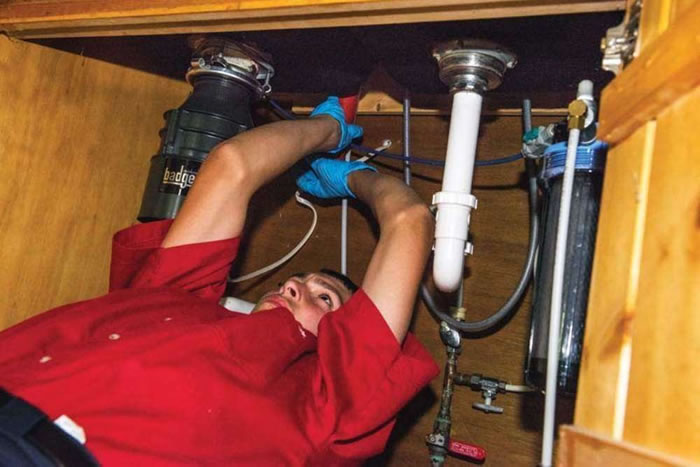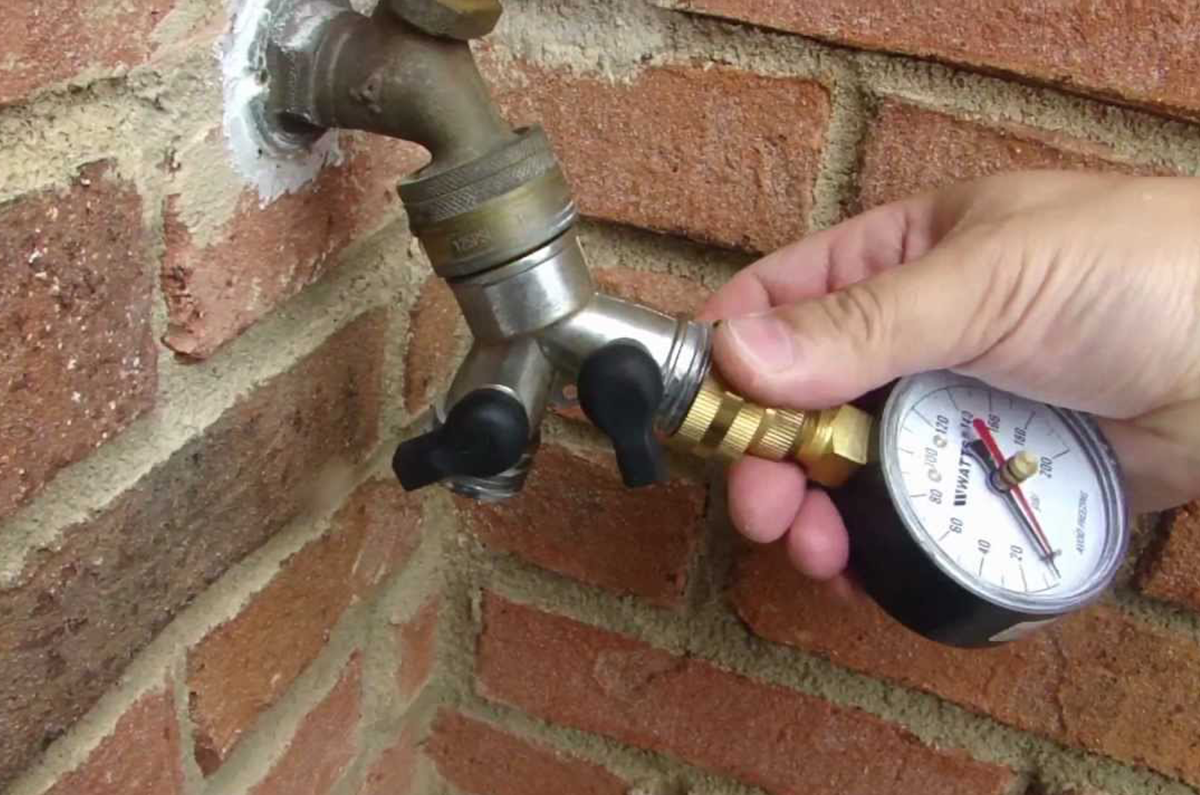Quick Fixes for Addressing Low Water Pressure in Your Home
Quick Fixes for Addressing Low Water Pressure in Your Home
Blog Article
The content directly below relating to Low Water Pressure in the House? is incredibly enlightening. Don't bypass it.

Low water stress in your house can be a discouraging issue, affecting everything from bathing to washing recipes. If you're experiencing weak water circulation, there are several possible causes and remedies to check out. In this guide, we'll review common factors for low water stress and useful steps to deal with the problem efficiently.
Intro to Low Tide Stress
Low tide stress takes place when the circulation of water from your taps, showers, and various other components is weak than typical. This can make everyday tasks more challenging and much less effective. Understanding the reasons for low tide stress is vital to finding the ideal solution.
Typical Causes of Low Tide Pressure
Pipe Obstructions
Gradually, pipelines can become obstructed with natural resource, debris, or particles, restricting the circulation of water. This is an usual issue in older homes with galvanized steel pipelines.
Rust
Deterioration within pipelines can bring about leakages and reduced water pressure. Rust build-up can tighten water flow, specifically in maturing plumbing systems.
Faulty Pressure Regulatory Authorities
Stress regulators are accountable for keeping constant water stress in your home. If they malfunction, it can result in low water pressure or unequal circulation throughout your house.
Local Water Issues
Often, the problem exists outside your home. Community water system problems, such as main line leaks or maintenance job, can briefly decrease water pressure in your area.
Just How to Diagnose Low Water Pressure
Examining Taps and Fixtures
Beginning by testing the water stress at various taps and components throughout your home. If the issue is separated to certain areas, it might indicate localized troubles.
Inspecting Pipes
Inspect noticeable pipes for signs of leaks, corrosion, or obstructions. Take notice of any type of unusual noises, such as knocking or rattling pipelines, which might suggest issues within the plumbing system.
Consulting with a Plumber
If you're not able to determine the source of low tide pressure, consider working with a specialist plumber to conduct a complete examination. They can determine underlying problems and suggest appropriate services.
Do It Yourself Solutions to Repair Low Tide Stress
Cleansing Aerators and Showerheads
Mineral deposits can gather in aerators and showerheads, lowering water circulation. Eliminate and clean these elements on a regular basis to enhance water stress.
Flushing Hot Water Heater
Sediment build-up in the hot water heater can limit circulation and lower performance. Purging the tank occasionally assists get rid of debris and keep ideal performance.
Checking Stress Regulator
Make certain that the pressure regulator is operating appropriately. Readjusting or replacing the regulatory authority can assist restore correct water pressure throughout your home.
Clearing Up Clogs in Pipeline
For small clogs, attempt using a plumbing serpent or chemical drainpipe cleaner to clear blockages in pipelines. Be cautious when making use of chemicals and follow safety guidelines.
When to Call an Expert Plumber
If do it yourself efforts stop working to deal with the issue or if you presume substantial plumbing problems, it's best to seek help from a licensed plumber. They have the proficiency and devices to address complex issues securely and efficiently.
Preventive Measures to Maintain Water Pressure
Normal Upkeep
Arrange routine upkeep for your plumbing system to stop issues such as deterioration, leaks, and clogs. Dealing with small problems early can aid avoid even more substantial repair services later.
Mounting a Stress Booster
Think about mounting a stress booster pump to enhance water pressure in areas with constantly reduced circulation. This can be especially valuable for multi-story homes or properties with high-demand fixtures.
Tracking Water Usage
Be mindful of water use routines and prevent overtaxing the plumbing system. Basic changes, such as staggering showers and laundry loads, can aid preserve adequate water stress.
Final thought
Dealing with low tide pressure can be discouraging, yet determining the underlying causes and carrying out appropriate options can restore optimum flow throughout your home. Whether it's cleansing aerators, checking pipelines, or seeking advice from a plumber, taking proactive steps can make sure a stable supply of water for your daily needs.
HOW TO FIX LOW WATER PRESSURE IN YOUR HOUSE (EXPERT GUIDE)
The morning shower lacking any real pressure? Bathtub taking hours to fill? Or maybe you’re dissatisfied with the inadequate performance from your combi boiler?
Then you, like millions of others across the UK, might be experiencing low water pressure.
Fortunately, the good news is that you don’t have to continue living this way. The cause of low water pressure in the home is often quite simple, and you may not even require a plumber to fix the problem.
What causes low water pressure in the house?
If you are experiencing issues with water pressure throughout your home, then you may have one of the problems outlined below.
Most of these problems can be fixed quite easily, but for others, you may need to contact a plumber.
Obstructed Shutoff Valve
If you’ve just bought a new home or recently had building work conducted on your property, there is a chance that your water valves were not fully opened.
If the water valve is partially closed, then you may be restricting the amount of water entering your home. To fix this, simply ensure the valve is fully open.
If the valve appears fully open but you are still encountering reduced water pressure, then the valve may be broken. If this is the case, do not under any circumstances try to fix it without proper training.
Often found under your kitchen sink, a water valve will usually look like a bright yellow handle.
Again, if you believe the water valve is broken, contact a plumber immediately.
Leaks in Your Water Pipes
Leaks are the worst-case scenario when it comes to low water pressure.
If the water pipes are damaged, then this will cause low water pressure, as not all the water will make it to your taps.
After you’ve checked to see if the valve is fully open, you can conduct a leak check of your home. Now, this may seem scary, but it is actually quite simple.
Clogged Water Pipes
Clogged water pipes are one of the most common causes of low water pressure.
These clogs usually build-up when your home is supplied water via iron pipes. Iron is particularly vulnerable to rusting which can then break off and cause an obstruction within your system. You also face the problem of things like dirt, gravel or sand entering creating mineral deposits which further block water flowing from the mains water supply.
Unfortunately, if you suspect that clogged pipes may be restricting your water supply, then you will need to contact a plumber.
In this situation, you will either need to have your pipes removed and cleaned or in more severe cases, you could require a new set of water pipes.
Designer Taps
Designer taps look fantastic, but are they built to be efficient in your plumbing system? Modern taps are built for modern homes and they often have lower flow rates that are specifically designed for use within high-pressure systems.
Install a Water Pressure Booster Pump
If the issue is simply that the mains water pressure supply is too low, the simplest fix is to invest in a booster pump. Found in homes of all shapes and sizes, booster pumps are a relatively cheap option to add extra pressure to your home.
Designed to increase water pressure by passing water into the pump from your mains supply and then ejecting it into your home water system at a higher pressure, a booster pump is a truly simple and effective solution to increasing water pressure.
https://www.anchorpumps.com/blog/the-plumbers-guide-to-fixing-low-water-pressure/

HOW TO FIX LOW WATER PRESSURE IN YOUR HOUSE (EXPERT GUIDE)
The morning shower lacking any real pressure? Bathtub taking hours to fill? Or maybe you’re dissatisfied with the inadequate performance from your combi boiler?
Then you, like millions of others across the UK, might be experiencing low water pressure.
Fortunately, the good news is that you don’t have to continue living this way. The cause of low water pressure in the home is often quite simple, and you may not even require a plumber to fix the problem.
What causes low water pressure in the house?
If you are experiencing issues with water pressure throughout your home, then you may have one of the problems outlined below.
Most of these problems can be fixed quite easily, but for others, you may need to contact a plumber.
Obstructed Shutoff Valve
If you’ve just bought a new home or recently had building work conducted on your property, there is a chance that your water valves were not fully opened.
If the water valve is partially closed, then you may be restricting the amount of water entering your home. To fix this, simply ensure the valve is fully open.
If the valve appears fully open but you are still encountering reduced water pressure, then the valve may be broken. If this is the case, do not under any circumstances try to fix it without proper training.
Often found under your kitchen sink, a water valve will usually look like a bright yellow handle.
Again, if you believe the water valve is broken, contact a plumber immediately.
Leaks in Your Water Pipes
Leaks are the worst-case scenario when it comes to low water pressure.
If the water pipes are damaged, then this will cause low water pressure, as not all the water will make it to your taps.
After you’ve checked to see if the valve is fully open, you can conduct a leak check of your home. Now, this may seem scary, but it is actually quite simple.
Clogged Water Pipes
Clogged water pipes are one of the most common causes of low water pressure.
These clogs usually build-up when your home is supplied water via iron pipes. Iron is particularly vulnerable to rusting which can then break off and cause an obstruction within your system. You also face the problem of things like dirt, gravel or sand entering creating mineral deposits which further block water flowing from the mains water supply.
Unfortunately, if you suspect that clogged pipes may be restricting your water supply, then you will need to contact a plumber.
In this situation, you will either need to have your pipes removed and cleaned or in more severe cases, you could require a new set of water pipes.
Designer Taps
Designer taps look fantastic, but are they built to be efficient in your plumbing system? Modern taps are built for modern homes and they often have lower flow rates that are specifically designed for use within high-pressure systems.
Install a Water Pressure Booster Pump
If the issue is simply that the mains water pressure supply is too low, the simplest fix is to invest in a booster pump. Found in homes of all shapes and sizes, booster pumps are a relatively cheap option to add extra pressure to your home.
Designed to increase water pressure by passing water into the pump from your mains supply and then ejecting it into your home water system at a higher pressure, a booster pump is a truly simple and effective solution to increasing water pressure.
https://www.anchorpumps.com/blog/the-plumbers-guide-to-fixing-low-water-pressure/
We were made aware of that report on through a pal on a different web address. Sharing is caring. Helping people is fun. Thanks a lot for taking the time to read it.
Visit Our Site Report this page